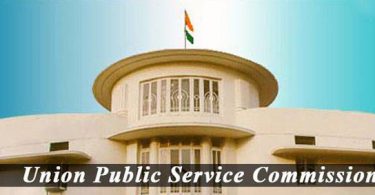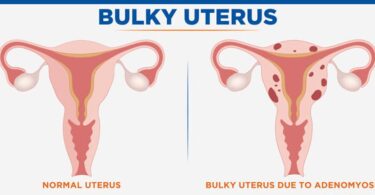 Regular growth of repertory, like that of Materia Medica, is the true index of the progress and richness of the Homoeopathic system of medicine. Their growth, therefore, is most vital for the very existence of the system and its contribution for the health and welfare of the society.
Regular growth of repertory, like that of Materia Medica, is the true index of the progress and richness of the Homoeopathic system of medicine. Their growth, therefore, is most vital for the very existence of the system and its contribution for the health and welfare of the society.
The changing pattern of sickness, the tremendous atmospheric and environmental changes, and use and abuse of potentially toxic drugs (crude) have created challenges today which were not known in Hahnemann’s time. It is, therefore, tragic if our instruments are not geared up to these challenges. The Materia Medica and its field of application and repertorial indices have to grow rapidly and made up to date. The background of our earlier workers in these areas should inspire us to do such things more extensively and with much greater speed, because of tremendous technological advances that modern world has seen. These problems should be taken up more seriously at the International meets.
Even in our daily clinical practice, there are cases with paucity or absence of mentals or generals and we have to depend upon the local or particulars that are available. This is often seen in cases of ordinary acute coughs and colds, where we depend upon only the regional modalities. If there are more of common (generals) and regional symptoms, then Boenninghausen’s approach has to be seriously considered for repertorial analysis and evaluation.
It may again be emphasised that Homoeopathic Materia Medica has been basically built up on the provings of medicines. Some medicines have been overproved or have been used and confirmed much more frequently than others. Therefore, they have a large data of clinical provings and application. So, in the process of developments of Homoeopathic Repertories and their usage in the analysis of remedies, there is overwhelming dominance of such remedies, with the result that the lesser known remedies, which would be the right similimum in a particular case, are not brought to the surface and are missed. To overcome such difficulties, Boenninghausen conceived the idea of completing symptoms of a remedy by analogy, and thus enlarging the capacity or scope of even lesser known remedies or of remedies with inadequate proving for more extensive application. This has tended to repair this deficiency, but even then it makes only a small dent in the dominance of the bigger remedies. Here it is desirable to integrate both the Kentian and Boenninghausen’s concepts for use in the application, and might help us in many situations.
It may be mentioned here that numerical totality will pay great dividends on working with Boenninghausen or Boger’s Boenninghausen Repertory than with Kentian methods. In the Kentian method, the dependence on numerical summation can often be misleading. Here, we have to make a judicious selection with special reference to Materia Medica. We discovered the same thing frequently in our clinics, when we worked with Kishore Card Repertory, where gradation and evaluation of different remedies have not been punched or indicated. These were omitted partly because of these considerations. There has been a tendency in the past to consider these difficult concepts as inimical to each other. Boger, as we have already seen, has tried to integrate them.
Hering in his Guiding Symptoms, recorded quite a number of new clinically confirmed symptoms which were not present in the provings of the drugs. The applied Materia Medica is built up on this very basis. Lycopodium‘s aggravation of 4 to 8 p.m. appeared only in the clinical field and was not noticed in the provings. Fortunately, the earlier pioneers of Homoeopathy, recorded by careful observations this clinically confirmed symptom, and thus, enriched our Materia Medica and Repertory. Unfortunately, the later Homoeopathic physicians have not paid sufficient attention to it, with the result, that upgrading of the Materia Medicas and Repertories has not taken place to the desirable extent. Without this activity, provided it is done in a scientific and objective manner, we cannot make our Repertories really useful enough, for meeting the increasing and complex demands of the sick humanity, especially when the sickness itself is developing newer and more complex facets, with the increasing complexity of the civilization.
Even during Hahnemann’s times, possibility of such difficulty were seen by men like Boenninghausen, and later by his worthy follower. Dr. Boger, as I have mentioned above. The comprehensive generalisation made it possible for more remedies to have a place of honor in a particular case of sickness.
In actual practice, we sometimes come across quite a number of concomitant symptoms which could be diagnostic of a remedy, but in literature, we do not find them recorded. We could extend Boenninghausen’s concept of analogy in our need for wider area of selection of a remedy by combining rubrics in certain locations, where signs and symptoms exhibit themselves.
For example. Pain, numbness etc. in the left upper limb and hand could be present in both angina pectoris or cervical spondylosis or spondylitis. Especially for the pathologic rubric of angina pectoris, could we not combine the following rubrics and utilise also the following sensations where relevant.
(a) Numbness (Kent’s Repertory page no. 1035)
(b) Pain (K- 1049)
(c) Pain heart extending to left hand (K- 850)
(d) Pain heart extending to back (K- 850)
(e) Pain heart extending to hand (K- 850; Kunjli- 717)
(f) Pain heart extending to neck and shoulder (Kunjli- 717)
(g) Pain heart extending to shoulder (KunjIi- 717)
(h) Pain heart extending to left scapula (Kunjli- 717)
(i) Pain heart extending to left arm (Kunjli- 717)
(j) Pain heart extending to axilla (Kunjli- 717)
For angina, we could also refer to this rubric-
Pain, pressing heart (Kunjli- 725)
Also Chest, constriction heart (Kunjli- 690)
Chest, constriction, grasping sensation (Kunjli- 710)
We have felt the need for combining the same rubrics in certain conditions when we felt the danger of missing the indicated remedy. For example,
(a) Thinking of complaints aggravates and (b) Occupation ameliorates.
In certain cases, this combination was more fruitful than the single rubric, especially, when we were using them as eliminative symptom or using Kent’s artistic method of repertorisation.
These days, the software experts of computerised Repertory have given interesting facilities for doing some of these operations and that does help in the analysis of the similimum. Here I would like to sound a note of warning regarding the place of computer in the practice of Homoeopathic medicine and remedial analysis.
We are confronted with the study of patients, who present themselves with disturbing signs and symptoms. A sign or symptom occurring in any person is not an isolated phenomenon. It may have multiple inter-relationships including causes, associated phenomenon and effects. These may be often apparent or only be a submerged subjective psychological component, sometimes minor, but often of major importance. The responses of the patient to his disorder, his reactions to it and understanding of it are essential, and often deeply revealing parts of the history.
Therefore, the requirement on the part of the physician is-
(a) Understanding and sympathy, kindness and humane consideration.
(b) His intensity of the personal experience in medicine.
(c) Ability in sharing embarrassing confidences and frustrations.
(d) Skill in eliciting stories of the history using ‘give and take’ philosophy when one is engaged in coming to the most intimate problems.
“Sir James Mackenzie contended that the patient himself is our problem. He is a very cosmos in himself, unlike any other human being that exists. His reactions and response to stimuli, whether of drugs or of disease, are of special interest and importance. Diagnosis must go deeper than the most proximate causation – deeper than those previous conditions which have permitted the disease – deep down into the hidden life – activated, with which curative response is indissolubly bound up.” These could have been Hahnemann’s words.
Can computers replace the mental processes required in the case analysis and diagnosis? True diagnosis means deep understanding and can we program such things?
These subtle and complex aspects of human problems cannot be programmed by computer analysis, Let us, therefore, use computer software for case analysis and repertorisation with great caution, keeping in view its limitations.
Machines can yield highly useful data based upon masses of other data fed into them. Human understanding of human problems is possible only through human thought.
Need for Research in Homoeopathic Repertories
I have already indicated the difficulty of an operator for the accessibility of certain symptoms and complaints in the existing literature on Repertories, and it may be necessary even to make use of existing rubrics in the Repertory by combining them, especially in certain diagnosed functionally pathological conditions. Apart from it, research workers in the Repertory have to work continuously for indexing of provings of newer drugs, and especially of the confirmed clinical findings of the older drugs in the areas which have not been covered in the existing literature. This activity is very important and I have suggested in some of the professional meetings that we should have an International forum, where we can meet and work together, so that we can take all the sources from all over the world and index them on the commonly agreed basis.
Let us take up, for example, Kent’s Repertory- first edition. There are certain rubrics and details which were discarded by the author in the subsequent edition. Could we utilize that material and incorporate it in the newer literature, provided they are dependable and useful?
For example, he had, as some of the earlier repertorians, placed in one section, alternation of complaints. We could go back again to this pattern and place these alternations in the chapter on Generalities, where they deserve to be placed. Now, we have to hunt through different chapters. For alternation of eruptions with diarrhoea, we may have either to see it in the chapter on Skin or in Rectum, under Diarrhoea.
Similarly, Diarrhoea and Rheumatism. Diarrhoea and Physical complaints. Diarrhoea and Heat of head. Epistaxis and Haemoptysis. Laryngeal and Uterine complaints. Mental and Physical symptoms. Pain in abdomen and Pain in chest. Palpitation with Pain in lower limbs and so on.
Many such examples could be cited.
Another rubric taken from Boenninghausen’s Therapeutic Pocket Book – ‘Yawning agg.’, placed under Generalities was also discarded. This could easily be replaced in Kent’s Repertory after suitable study. There is also ‘Agg. after yawning’ and ‘Amel. from yawning’.
As indicated earlier, our research activity has, today, to lay a great emphasis on judicious additions to our Repertories, especially of remedies which not only have been proved thoroughly, but also have developed fairly good clinical materials. Take the example of Pyrogen and Calc-fl. Boenninghausen is, of course, very deficient in the listing of both the drugs, but even Kent’s Repertory needs additions regarding them. I was surprised to find that there are a lot of rubrics in which both the drugs do not appear in the Kent, in spite of the fact that Materia Medica and clinical provings have emphasized their indications. Somebody has to do this work.
Until only very recent times, Kent’s Repertory has gone different editions but they have been only reprints. Recently, Kunjli’s work has introduced some additions. Major work was done in Synthetic Repertory. Even Boger’s additions were not incorporated. Such a number of important drugs, for example, Kali-m, Nat-p, Calc-fl have not been given due representation.
Certain rubrics have been left incomplete and unsatisfactory. Under Chest, for example, ‘Inflammation, lungs, measles, after’ – only Kali-c has been mentioned. All of us know from our experience that it is a large rubric. At another place in Kent, under ‘Heat’, certain vague or outdated terms continue to exist e.g .
‘Irritative fever’, ‘Paroxysmal fever’ and ‘Pectoral fever’.
In the section on Head, there is no rubric having ‘Warts’, although, warts have been mentioned in other locations like face, and in clinical experience, we found quite a number of cases having warts on the scalp. In a very recent experience, we found in an old lady, a number of hard warts on the scalp with lot of itching. Sepia 10M was the only remedy which gave her tangible relief.
In the section of Rectum, page 618 of Kent’s Repertory, the rubrics ‘Flatus, loud, stool, during’ contains only four drugs-aloes, Nat-s, ph-ac, and thuj. This is too small a rubric and should contain some remedies like Arg-n, Podo, Calc-p etc.
In the section on Abdomen, the rubric ‘Liver, enlarged’ (Kent’s page 546)- Cardius-marianus is given in the lowest degree. It is not mentioned at all in the enlargement of the left lobe, where it should be given in bold types.
The section on Generalities has to be augmented and enriched, as that is the most important section, from the point of view of repertorisation. These examples have been taken at random, just to indicate that expert revision of such an important work is long over-due, and it should be done by a team of workers.
Another area where we have to make special addition, is the introduction of Cross References, especially, in the chapter on Mind. Even experienced prescribers need to distinguish different shades of a particular mental symptom.
I am giving below a case from my clinical practice, to show how clinical experience can help us in enriching our Materia Medica and Repertory by unearthing the hidden unknown virtues of some of the even lesser known drugs.
One Mr. R K, aged 27 yrs., approached us on 15th of October 1982 for excessive dandruff and falling of hair, especially during the last three weeks. On inquiring, he disclosed there was lot of work tension during the last few weeks. He complains of headache when he is exposed to the sun for sometime.
In the past history, he had suffered from jaundice, measles, mumps and chickenpox. In the, family history he informed that his father suffered from eczema, asthma and diabetes. His mother had hypertension.
He himself is a tense, nervous patient. He weeps when upset emotionally and wants to be alone at that time. He adds extra salt to his food, and is very fond of chilled cold drinks.
Apparently, he appeared to be a case of Nat-m. On 15th of October, he was prescribed Nat-m 200, Nat-m 1M, then Nat-m 10M, to be taken on three successive days.
On 19th of November, he reported that his desire for salt has decreased and falling of hair is slightly better. He was kept on sac-lac.
On 29th of November, his hair was still falling, though slightly less, but he was still much worried and anxious, since he was to be married soon. He now developed cramps all over the body. This development forced us to look further into the case, as nature was throwing relevant hints for our next step of action.
We thought of giving Verat-album because of:
(a) Extra salt
(b) Abnormal desire for chilled drinks
(c) Cramps all over the body
He was given Verat 30. Hair falling was further decreased, but did not stop. Later, he was prescribed Verat 1M, which stopped fully the abnormal falling of hair and he improved very much in general.
In the Kent’s Repertory, we don’t find Verat under falling of hair and dandruff. We can certainly add it there. I forgot to mention, he had stopped medication for sometime, and later, there was a relapse of this hair loss, but one dose of Verat 10M restored the normalcy. We could also think of making a note regarding the relationship of Verat to Nat-m i.e. Verat follows Nat-mur, or is complementary to it. This is merely a suggestion, and has to be confirmed in more cases.
There was another incidence of a patient of mine, who had arthritis and muscular rheumatism now and then. His complaints in general were better while eating. He used to have sore pains confined to small spots here and there, but more marked on the right side of body. He was generally better by continued motion, but worse in the morning on beginning to move. He had taken quite a number of remedies, but no definite relief could be obtained. Once he developed pain in the right shoulder, which was better by raising the arm upwards, and worse on letting it hang down, and also better when he played about using his right arm. Sang and Rhus-t gave temporary relief. Two concomitants came to our help. One was twitching of left lower eyelid, and the other was, whenever he sat down for his meals, he ate his food rather hurriedly. He drank water also hurriedly. Zinc, one dose, gave instant relief to the pain in the right shoulder, and in the afternoon, he was not as much fatigued as he usually felt earlier.
Referring to Kent’s Repertory, we find that Kent missed to record Zinc in the rubric ‘Hurry in general’, as well as the rubric ‘Hurry in eating and drinking’. I feel that it should be added. In some of the source books, Zinc has been mentioned as having the symptom – Hurried in eating and eating greedily. It may have to be mentioned that some recent workers have added this rubric.
In my clinical experience, I found that Thalaspi bursa pastoris came very handy and useful in cases of haemorrhage in females, due, especially, to fibroids, especially when apparently indicated remedies failed to control the bleeding. It saved a patient’s life and my reputation. Another drug which was found to be very useful in such cases was Ficus religiosa. These experiences should stimulate, us in making suitable upgrading of our Repertories in general.
Another area, where at times, I have been bogged down, was the Sides of the body. For example, in Kent’s Repertory, Ant-t has been listed under side left in the second grade, but in the Hering’s Guiding Symptoms, there are more symptoms listed on the right side. It has to be revised. It is also interesting to note that different authors at times changed the indexing of symptoms on sides from one position to another. For example, Boenninghausen, in his earlier writings, listed Apis weakly on the left side, but in later editions, he shifted the emphasis more to the right.
In the clinical literature of Homoeopathic Materia Medica, we come across a lot of references where suppression of one condition like skin eruptions, leads to something much worse. Even in everyday practice, in chronic cases, we tend to suppress certain group of symptoms by a partial similimum, and the result is never ending sickness. It may be desirable to introduce in the Generalities, like, as already suggested-, ‘alternations of conditions’, a paragraph having ‘suppression of conditions or symptoms by local applications or crude medications’ and certain sickness or illness resulting from such suppressions are also indicated wherever relevant. Suppression of discharges like sweat, menstruation, stools, urine etc. gives rise to disturbs economy. Suppression of skin eruptions may lead to myriad of abnormal functions and structure. All these could be placed under ‘Suppression’ in the Generalities.
In the repertorial exercises, we often come across remedies like Bell, Bry, Sulph, Sep, Nux-v, Puls as the leading remedies. Sepia will emerge much more frequently and prominently than Silicea, and in our actual experience, in many such cases, Silicea happened to be the right remedy. Remedies like Tub, Carc, Syph, Calc-p, Graph, Aur etc. are hardly able to compete with them, although they are deep constitutional remedies. The main reason for this paradox is that some remedies were proved more extensively, and confirmed clinically more often than others. This is evident for a number of pages devoted to these remedies, both in the Allen’s Encyclopaedia and Hering’s Guiding Symptoms. This is one disability which we have to contend with. We did not make enough efforts, compared to our earlier pioneers in collection and indexing of suitable clinical data. Whether we use any Repertory or Card analysis or computer softwares, this inherent weakness will always tend to vitiate our results, unless we are conscious of this handicap, and try to refer more often to Materia Medica and other storehouses of our experiences.
Very recently, my sister, herself a homoeopathic doctor, suffered frequently from mouth ulcers affecting more of the left side of mouth, tongue and palate. They appeared something like blood boils, bluish dark red papules, and later, bursting and oozing blood. The pain was not that severe, but soreness, and at times, when throat was affected, she had a foreign body sensation and wanted to clear her throat frequently. No thermal modality could be ascertained except that she is very fond of cold chilled drinks, is using lot more salt than others, and cannot relax; desire to move and do things here and there; or go out for a walk; gets depressed often; and likes socialization. There was excessive salivation along with the ulcers. She was hardly totally free from it. We had tried a number of remedies like Phos, Nat-m, Lach, Mere, Nit-ac, Ham etc. but nothing helped her. I decided to give her Carc 200 one dose. The reaction was instantaneous with agg. of symptoms, along with very painful heaviness of the right breast which became sensitive to any touch or clothing. Within a week, all this subsided and for the first time she was free from these mouth sores and remained free for months. Only very recently, after 3-4 months of the last episode, she again developed these sores. Carcinocin 30 was taken without effect. She took a dose of Carc 200 which immediately started an agg. and increased salivation, but it subsided within 3-4 days. She is more relaxed and generally well, although, this time also she had heaviness and soreness of both the breasts for three or four days.
This is a very valuable data and could be utilized as addition to our Materia Medicas, as well Repertories. I may mention that Carc was, most probably, prepared from malignant growth of breast. At present, I have no definite knowledge of origin of Carc as prepared by our pharmacists and laboratories. In this case, the clinical proving of action of Carc on the right breast may be related to this origin.
There is also a great need for preparing an integrated Repertory, as some of the areas covered by Boger in his Repertory, could be brought on without causing any disturbance.
Boger, in his section of General Agg. and Arnel., has introduced a rubric ‘Agg. when alone’, which includes remedies which have various kinds of anxieties, sadness, fear etc. when alone. Kent has not given it at all. He spread it under small different rubrics under Mind. For e.g – Sadness when alone, Fear when alone, Anxiety when alone, Weeping when alone.
In my opinion, this broad modality could be kept, may be, under Mind or under Generalities. I am working at an integrated Repertory, which could be much more useful in actual working, especially in computer software.
-Excerpt from ‘Evolution of Homoeopathic Repertories and Repertorisation- Jugal Kishore’
Author: Dr Jugal Kishore





